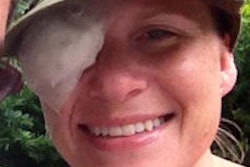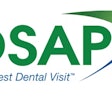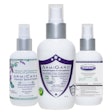
The words "do no harm" are echoed at many graduations of higher learning. The words are supposed to be at the core of the actions, decision-making, and ethics for each of us in dentistry.
 Noel Kelsch, RDHAP.
Noel Kelsch, RDHAP.There is a sequence of decisions that we as healthcare providers make that require us to think about not harming our patients, our staff, and the community. If one of the decisions is not complied with, or if we are negligent in decision-making, we put everyone at risk.
As related in a recent DrBicuspid.com article, patient Jenn Morrone experienced a sequence of errors that changed her life forever. For her, it started as just another dental visit. She felt confident in the dentist who that she had visited in the past. Unfortunately, that confidence was soon to be tried. This article details the errors and possible solutions that all dental practitioners can take to prevent this situation from occurring.
Error No. 1: Safety glasses were not provided
The patient was not informed about the need for American National Standards Institute (ANSI)-certified safety glasses, informed about Occupational Safety & Health Administration (OSHA) standards, or given safety glasses to wear.
Solution: All dental clinicians are required to wear safety glasses. It is a best practice to offer all patients safety glasses as well and explain why they should be used, as noted in this 2006 study in the British Dental Journal (BDJ, February 25, 2006, Vol. 200:4, pp. 218-223). Today's patient safety glasses are so lightweight that patients hardly know they are wearing them. Disposables make resetting the operatory quick and easy.
Error No. 2: No safe recapping of the syringe
The needle was not recapped when it was passed over Morrone's face, she said.
Solution: All needles should be recapped before they are passed. The single-handed scoop method or a recapping device must be used. The clinician should have a tray to hold the device or perform the scoop method. The needle should be capped as soon as the procedure is completed.
Error No. 3: Lapse in patient focus
When the dentist sat down to deliver care, Morrone said the dentist shared his frustration with a situation at home and even got up to answer a personal call from a cellphone.
Solution: When treating patients, it is imperative that the clinician be focused directly on the needs of the patient. Staff should manage outside distractions, and personal calls should wait until care is completed. Personal distractions can lead to clinical errors.
Error No. 4: Passing the syringe over the patient
When the dentist delivered anesthesia, Morrone reported that the dentist passed the syringe over her face. "He dropped the needle directly in my eye," she stated. "The needle with the Streptococcus bacteria punctured my eye, injecting the bacteria into it. I was not wearing eye protection." The lack of attention to basic best practices and protocols put her directly in harm's way.
Solution: Syringes should be passed in a manner that eliminates the syringe being passed over the patient.
Error No. 5: Lack of protocol for eye wash station, first aid, and emergency care
The dentist did not follow the protocol for an eye injury in the dental setting. Instead of immediately using the eye wash station, Morrone was given a wet tissue. Then, the dentist completed the root canal without addressing her injury.
Solution: Eye wash stations must be available in all dental settings and be maintained as recommended by the manufacturer. Dental staff should be trained in eye wash procedures. Emergency treatment for patients injured in the dental setting should be rendered immediately after the incident and follow-up is a must.
After the incident, Morrone had multiple surgeries, and her retina become completely detached. She is now completely blind in that eye and wears a prosthetic lens. Of course, this has led to personal stress, and she had to stop working. She has made it her mission to help others become more aware of the need for protective eyewear in the dental setting.
Empower your patients: A call to action
When patients sit in the chair, they can be exposed to so many things that could injure the head, neck, and eyes, according to the BDJ study.
A dental handpiece could cause irreversible damage. With a rotation speed of 180,000 to 500,000 times per minute, handpieces can project particles at speeds up to 50 miles per hour.
Chemicals; pieces of old filling materials; prophy paste containing silica, saliva, blood, or chemicals; or even a broken bur could fly into a patient's eye.
One of the greatest things we can do in infection control and prevention is empower our patients to be their own advocates. This is the mission of Support Clean Dentistry, a coalition of dental professionals dedicated to empowering patients. The organization works to communicate infection-control standards in a way that is understandable for patients. Educate your patients on eye protection, and encourage them to ask for it if anyone ever forgets to offer it.
When you choose to practice infection control at the highest standards, and when you incorporate best practices beyond what is required by law, you are elevating your practice and the whole dental industry.
Noel Kelsch, RDHAP, is an international writer and speaker on oral health topics. Her website is www.noelkelsch.com. She is a founding member of the Support Clean Dentistry Coalition.



















